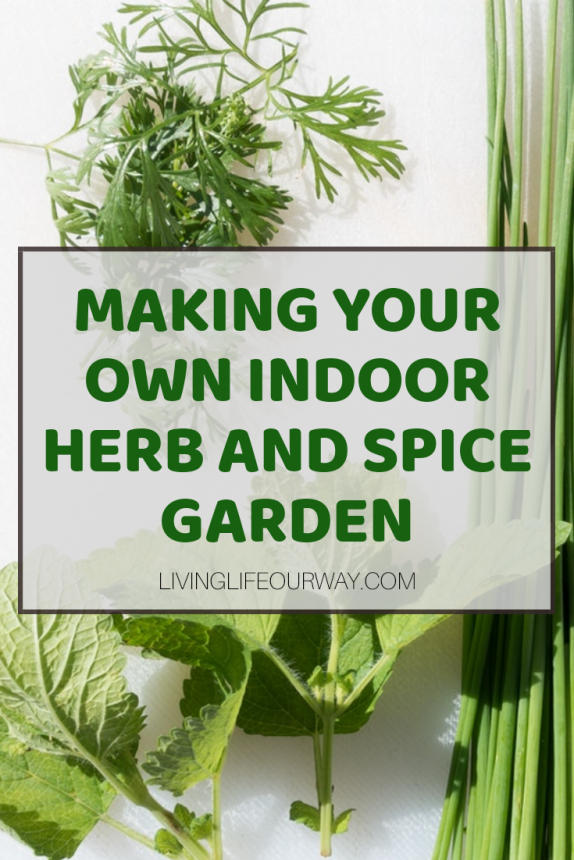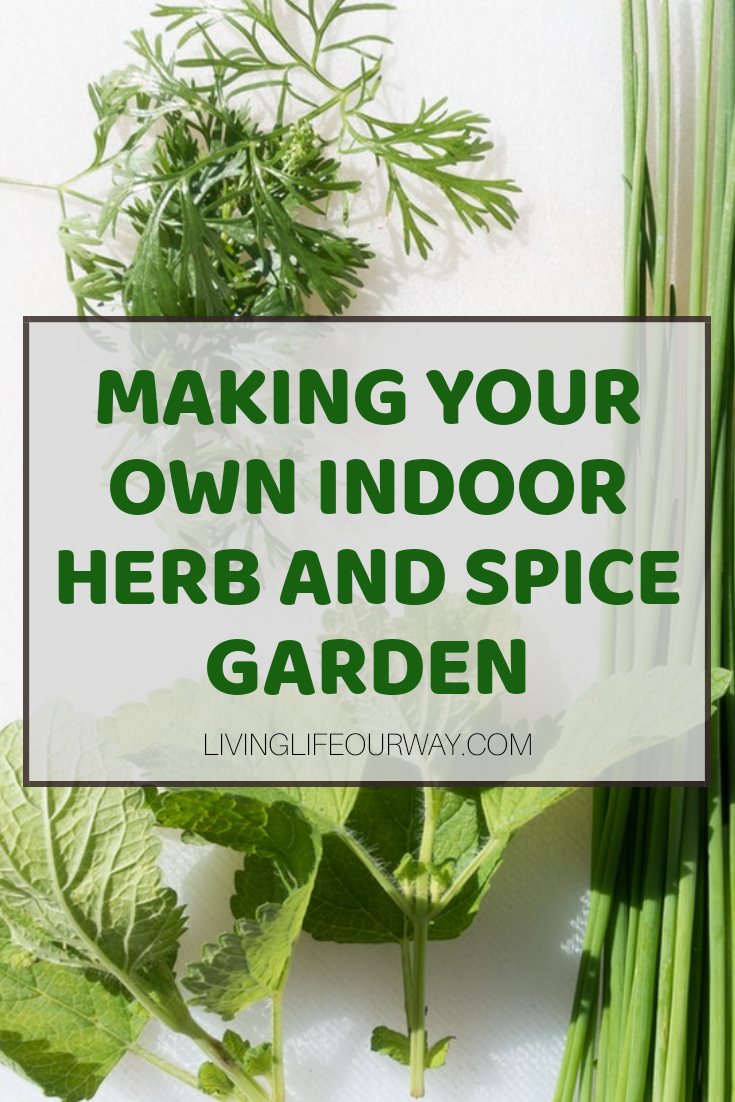Many people across the country don’t have a garden, or what they do have is on the small side. The great news is, that doesn’t mean you can’t embrace the green-fingered lifestyle. It’s just a matter of working with what you’ve got.
Creating an indoor herb and spice garden is the ideal way to grow plants in the home – and to have them at hand whenever you’re cooking. Fresh herbs and spices are so much nicer than shop-bought ones!

Where to start
• Work out what you want to grow.
A good place to start is working out what you use most in your meals. Basil is usually a popular choice, as are chives, oregano, chilli plants, and rosemary. However, you go with what works for you – this is your kitchen garden after all!
• Identify where.
You’ll need to allocate some space to your herbs and spices. The best place is near a window, as they won’t grow well if they don’t get much sunlight. The temperature needs to be fairly warm too; cold areas aren’t quite so good.
• Maximise space.
Think cleverly about how you can lay out your kitchen garden. A two-tier shelf takes up less unit space, and enables you to grow two rows of herbs, not one.
• Don’t overdo it.
Start with just a few herbs to begin with, then build up your collection as you get more confident.
Getting set up
• Get the right soil.
Chances are that your herbs and spices will need to be properly potted, and that might require soil.
• Invest in some containers with drainage.
It’s vitally important to allow plants to drain properly. Soggy soil kills off herbs alarmingly quickly!
• Buy some fertiliser.
It’s a wise idea to use fertiliser with your plants, as this maximises their growing potential, and means you’ll be able to enjoy better quality herbs and spices.
Harvesting
It’s exciting when your plants finally produce edible leaves and fruits for you to add to your food. Remember that a lot of herbs and spices can be frozen, or alternatively, they can be dried, then crushed into a powder.
Herbs and spices can also be used to make perfume (if you’re the crafty type). For example, adding lemon to myrtle and thyme produces a scent that’s close to Tom Ford Neroli Portofino, though perhaps won’t have quite the effect of the original.
Don’t feel you have to be limited to edible plants either. Some people love to grow plants that produce beautiful scents, like lavender for example. This is particularly wonderful for harvesting, then placing a sprig under your pillow to help you to sleep better. Plants like mint and chamomile are also great for drinking in tea.
In short, there are no end of possibilities for your kitchen garden – and you can keep it as small-scale (or large) as you want. Other window-ledges in the home are also prime plant-growing territory… in short, if they get plenty of sunlight, they’re ideal.
*This is a collaborative post

